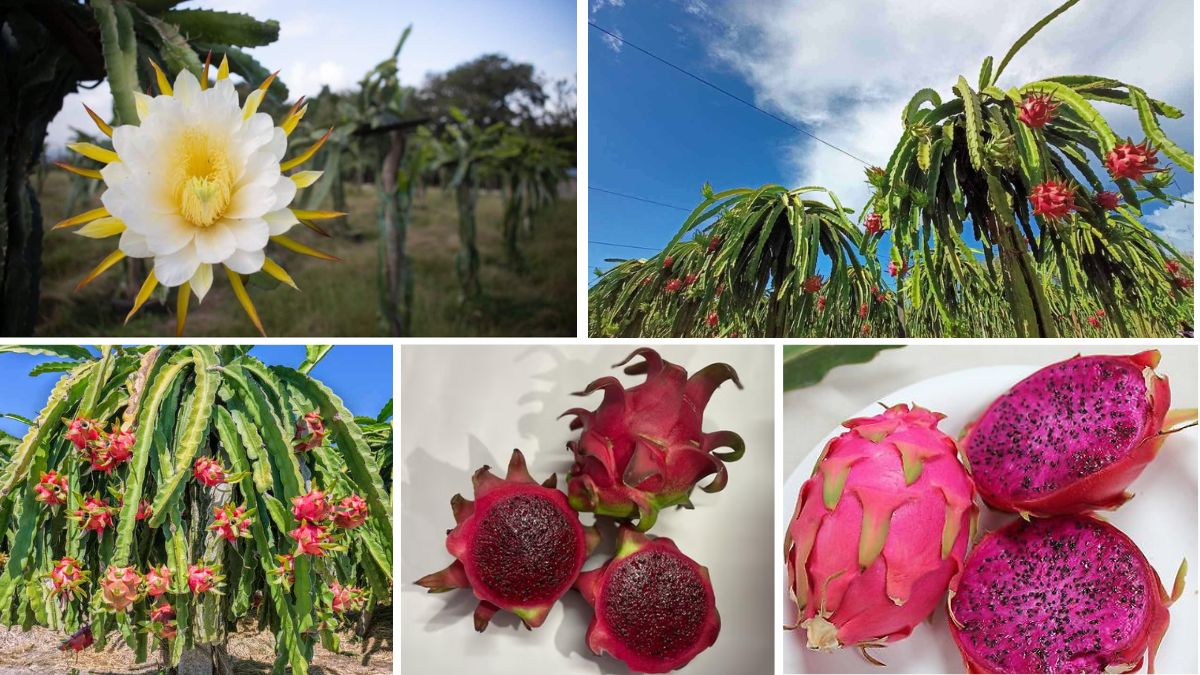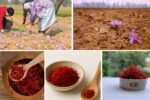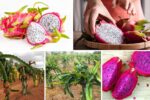Dragon fruit (Hylocereus spp.), also known as pitaya, is a stunning tropical cactus celebrated for its vibrant star-shaped fruit and striking nocturnal flowers. While growing the plant is relatively easy, many gardeners struggle to encourage abundant flowering, which directly impacts fruit production. Flowering is influenced by multiple factors including light, nutrients, water, pruning, and plant maturity. This guide explores proven strategies to stimulate more flowers on your dragon fruit plant, ensuring healthy growth, abundant blooms, and higher fruit yields.
1. Understanding Flowering in Dragon Fruit
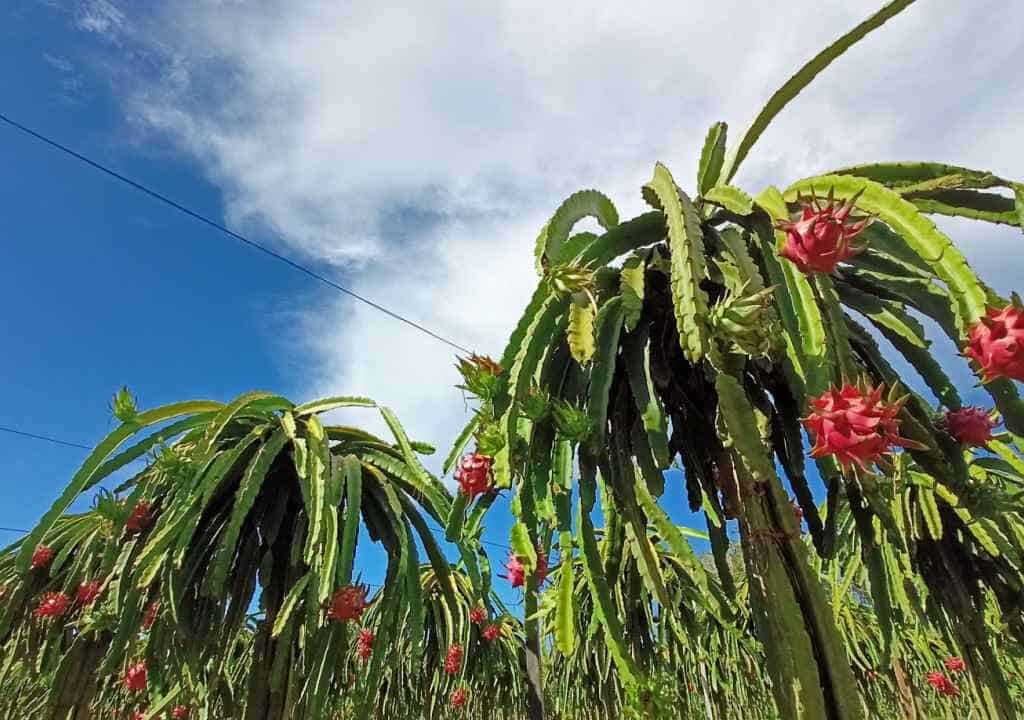
Flowering in dragon fruit is a natural process triggered by environmental and physiological cues. The plant generally begins flowering 6–12 months after planting, depending on its growth conditions:
- Light exposure: Dragon fruit is a sun-loving plant. Adequate sunlight is essential for flower initiation.
- Plant maturity: Young plants or recently propagated cuttings may take longer to flower.
- Temperature and humidity: Ideal flowering occurs in warm temperatures (20–30°C / 68–86°F) with moderate humidity.
- Nutrient availability: Flowering requires sufficient phosphorus and potassium for bud development.
Understanding these factors helps gardeners create the optimal conditions to promote abundant flowers.
2. Ensuring Adequate Sunlight
Sunlight is one of the most critical factors influencing flower production:
- Full sun requirement: Dragon fruit requires 6–8 hours of direct sunlight daily. Insufficient light results in fewer or no flowers.
- Indoor growth: Place container plants near south-facing windows or supplement with LED grow lights for 12–14 hours per day.
- Avoid shading: Keep plants away from tall structures or overhanging trees that block sunlight.
Tip: Rotate the plant regularly to ensure even sunlight exposure and prevent stems from leaning toward light sources.
3. Pruning to Stimulate Flowering
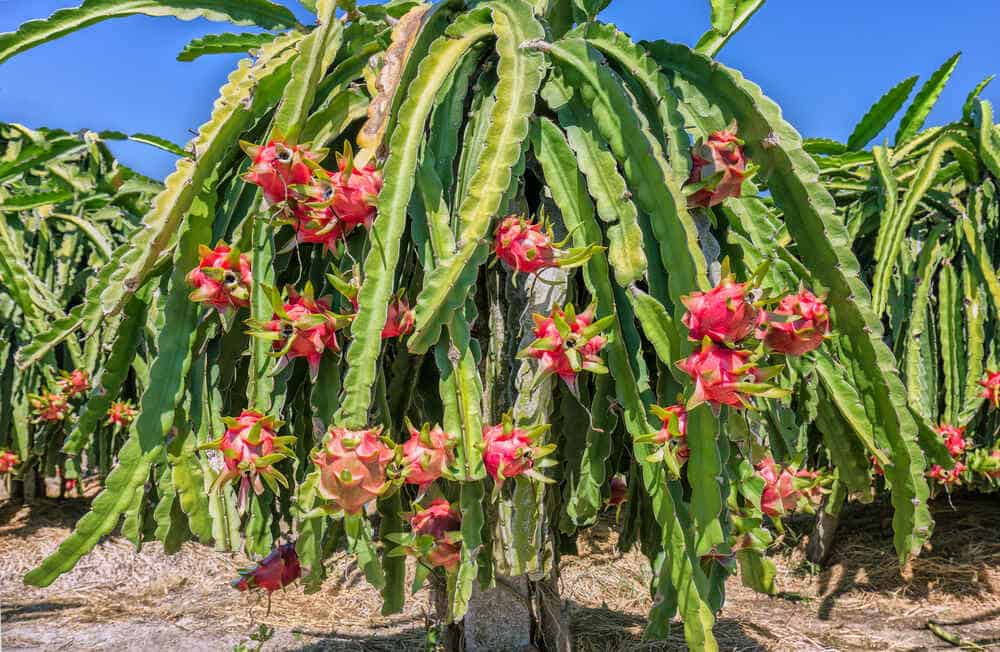
Pruning is essential for directing the plant’s energy toward flower and fruit production:
- Remove weak or damaged stems: Eliminates competition for nutrients and sunlight.
- Trim overcrowded branches: Improves air circulation and light penetration.
- Prune lateral stems strategically: Encourage main stems to grow upright, which enhances flower bud formation.
Proper pruning balances vegetative growth with reproductive development, boosting the number of blooms.
4. Optimal Watering Practices
Watering plays a dual role in flowering:
- Young growth vs. flowering: While dragon fruit needs regular watering for vegetative growth, excessive water during the flowering stage can reduce flower formation.
- Recommended schedule: Water deeply once or twice a week, allowing the soil to dry slightly between sessions.
- Container plants: Check the top 1–2 inches of soil; water only when dry.
Tip: Mulching around the base helps retain moisture while preventing overwatering and root rot.
5. Fertilization for Flowering
The right nutrients are crucial for stimulating flowers:
- Phosphorus and potassium: Promote flower bud initiation and fruit development. Use fertilizers with higher P and K content, such as 10:30:20 formulations.
- Nitrogen management: While nitrogen encourages leafy growth, excessive nitrogen can reduce flowering. Balance nutrients to favor reproduction over vegetative growth.
- Organic options: Bone meal, compost tea, or well-rotted manure can improve soil fertility and encourage blooms.
Tip: Fertilize every 4–6 weeks during the growing and flowering season for optimal results.
6. Temperature and Climate Considerations
Dragon fruit flowers are sensitive to environmental conditions:
- Ideal flowering temperature: 20–30°C (68–86°F).
- Avoid extreme heat or cold: Temperatures above 35°C (95°F) or below 15°C (59°F) may prevent flowering.
- Humidity: Moderate humidity (50–70%) favors flower bud development.
For indoor cultivation, temperature control and humidity regulation help create consistent flowering conditions year-round.
7. Encouraging Flowering Through Stress Management
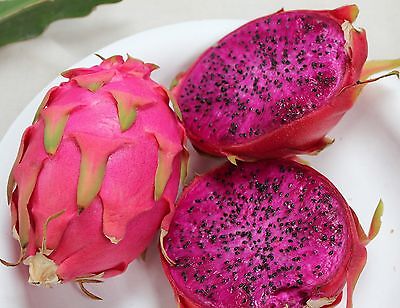
Controlled stress can trigger flowering in dragon fruit:
- Water stress: Slightly reducing water for a short period before the flowering season can stimulate flower initiation.
- Pruning stress: Removing excess vegetative growth encourages the plant to allocate resources toward reproduction.
- Avoid overfertilization: Excessive nitrogen-rich fertilizer encourages leaves rather than flowers.
Tip: Stress should be moderate and carefully managed to avoid damaging the plant.
8. Proper Support and Training
Dragon fruit is a climbing cactus, and proper support improves flowering:
- Trellises and stakes: Support vertical growth and prevent stems from breaking under their weight.
- Training stems: Direct stems along supports to ensure even light exposure and reduce overcrowding.
- Avoid stem overcrowding: Overcrowded stems reduce airflow and light penetration, limiting flower production.
Well-supported and trained plants are healthier, leading to more abundant and robust flowers.
9. Pollination Considerations
Even if flowers bloom abundantly, pollination affects fruit yield:
- Hand pollination: Indoor plants may require hand pollination using a soft brush to transfer pollen between flowers.
- Nocturnal blooms: Dragon fruit flowers open at night, so pollination efforts are best in the evening.
- Attracting pollinators: For outdoor container plants, bees and moths can naturally pollinate flowers.
Proper pollination ensures that flowers develop into healthy fruits, maximizing the benefits of increased flowering.
10. Common Flowering Challenges and Solutions
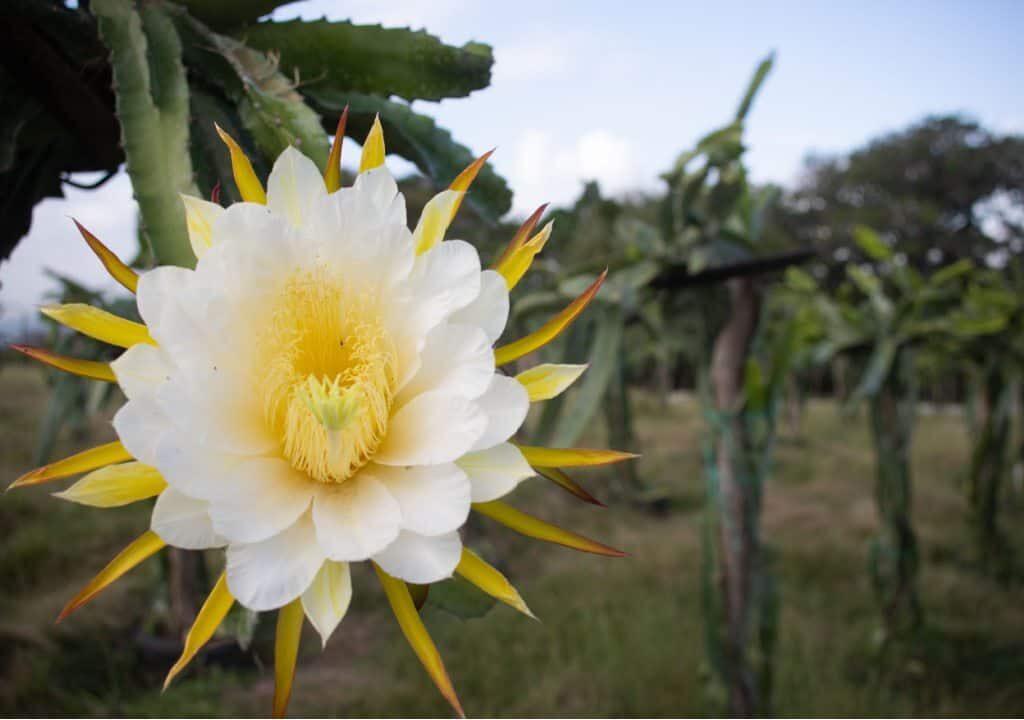
A. Few or No Flowers
- Causes: Insufficient sunlight, excessive nitrogen, or young plant age.
- Solutions: Increase light exposure, adjust fertilizer balance, and ensure the plant is mature enough to flower.
B. Flower Bud Drop
- Causes: Inconsistent watering, temperature extremes, or nutrient deficiency.
- Solutions: Maintain consistent watering, regulate temperature, and apply balanced fertilization.
C. Weak Flowers
- Causes: Poor nutrition or overcrowded stems.
- Solutions: Fertilize appropriately and prune to improve air circulation and light access.
11. Seasonal Flowering Strategies
- Spring/Summer: Optimal flowering period. Provide full sunlight, moderate watering, and phosphorus-rich fertilizer.
- Autumn: Reduce nitrogen, continue deep watering, and prepare for fruit development.
- Winter (for indoor plants): Maintain temperature above 20°C, supplement light, and water sparingly to simulate mild stress conditions that encourage flowering.
12. Benefits of Abundant Flowering
Encouraging more flowers on your dragon fruit plant provides multiple advantages:
- Higher fruit yield: More flowers translate to a greater potential harvest.
- Enhanced aesthetic appeal: Dragon fruit flowers are large, fragrant, and ornamental.
- Healthier plant growth: Balanced vegetative and reproductive growth ensures long-term plant vitality.
- Controlled indoor cultivation: Predictable flowering allows for better planning of harvest and fruit care.
13. Conclusion
Encouraging abundant flowering in dragon fruit requires careful attention to sunlight, pruning, water management, fertilization, support, and environmental conditions. By understanding the plant’s growth habits and adjusting care strategies accordingly, gardeners can achieve a profusion of blooms, leading to higher fruit production and a visually stunning plant. Whether grown in containers or outdoor gardens, these strategies ensure that your dragon fruit thrives, producing both ornamental flowers and delicious, nutritious fruit.
